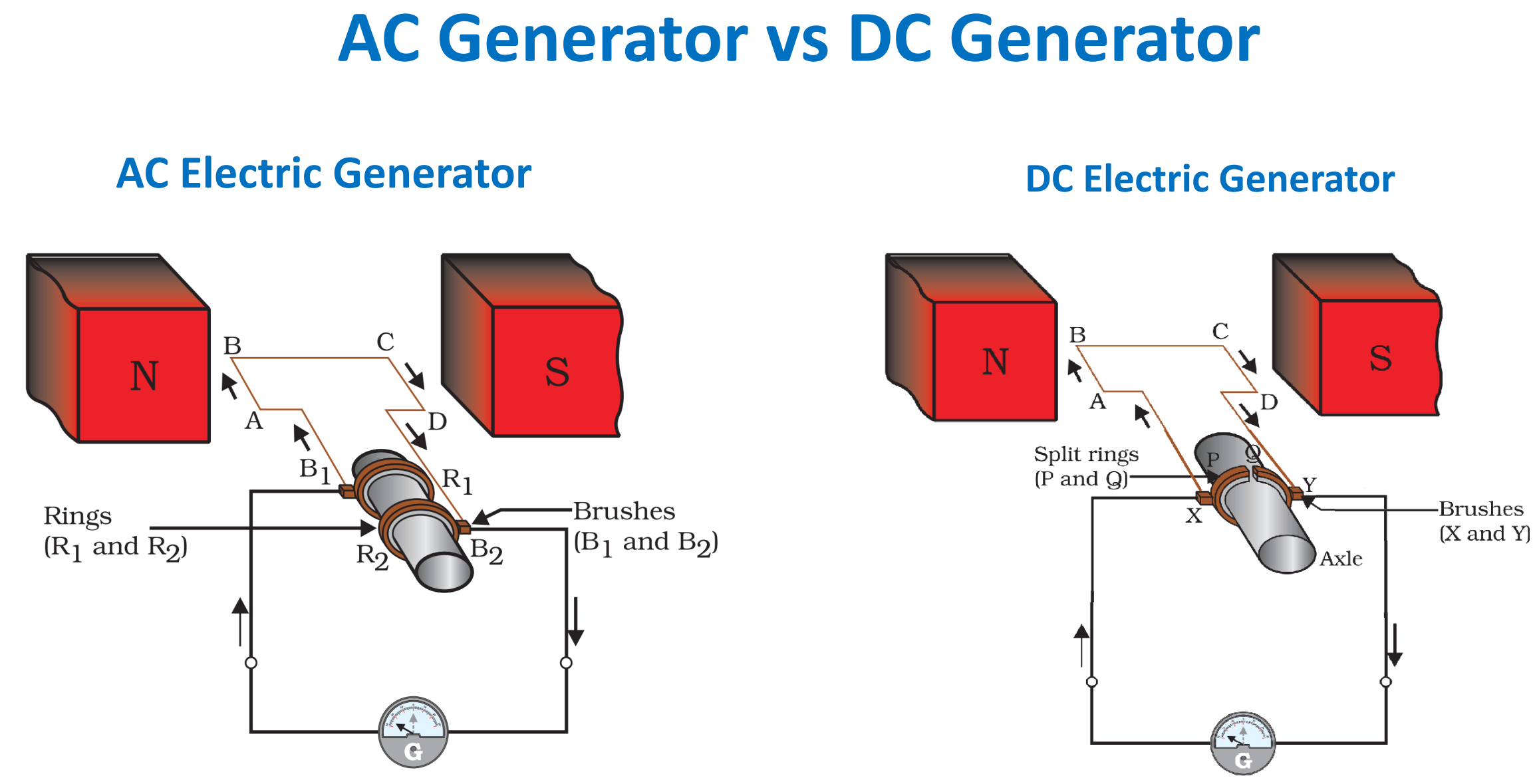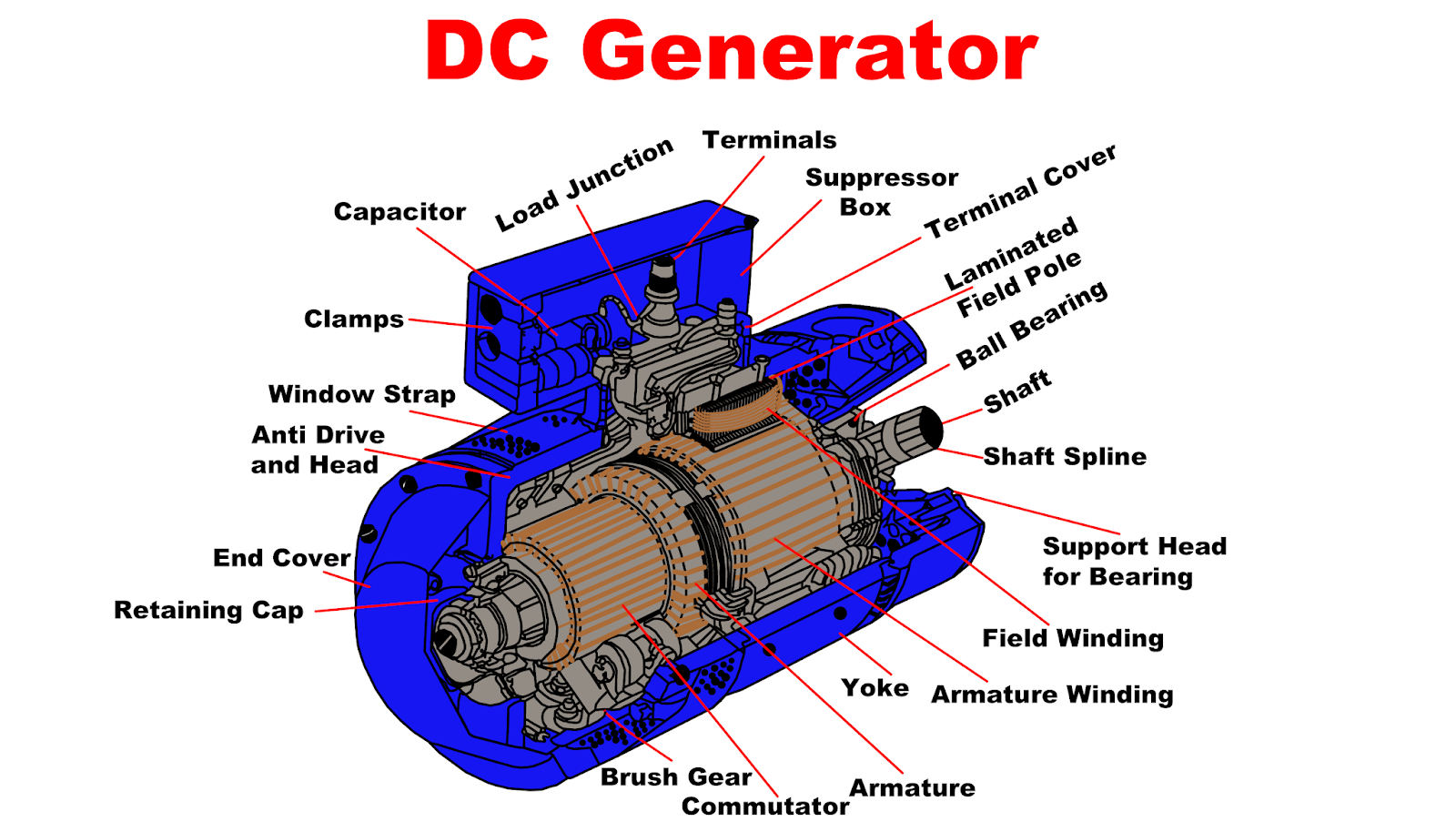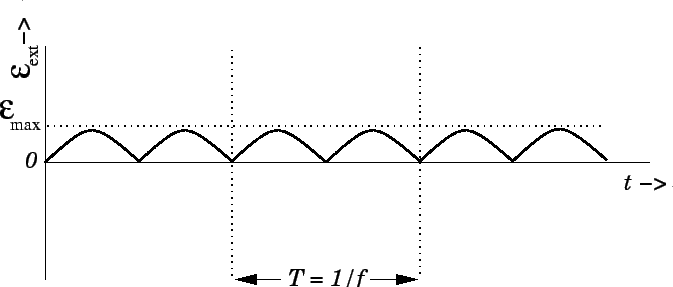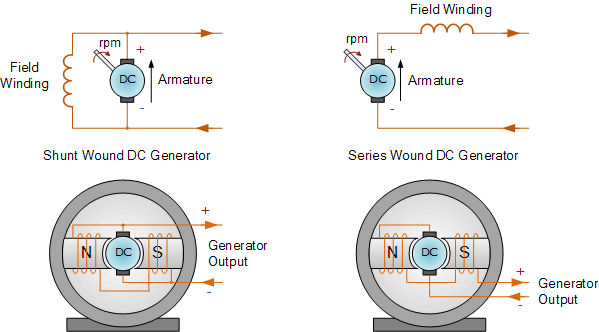A dc generator is an electrical device used for generating electrical energy the main function of this device is to change mechanical energy into electrical energy.
How does a dc generator produce electricity.
The dc motor is a ready made generator that will generate electricity.
A coil of wire rotating in a magnetic field produces a current which changes direction with each 180 rotation an alternating current ac.
An exciter is a small source of direct current dc that energizes the rotor through an assembly of conducting slip rings and brushes.
Electric generators 101.
An electric generator is a device that converts mechanical energy obtained from an external source into electrical energy as the output.
The 1 amp is the number of electrons moving 1 amp physically means that 6 24 x 10 18 electrons move through a wire every second and the voltage is the amount of pressure behind those electrons.
In the first practical electric generators called dynamos the ac was converted into dc with a commutator a set of rotating switch contacts on the armature shaft.
A dc generator is an electrical machine which converts mechanical energy into direct current electricity this energy conversion is based on the principle of production of dynamically induced emf.
Both of these generators produce electrical power based on the principle of faraday s law of electromagnetic induction.
A primer about how generators work.
This law states that when a conductor moves in a magnetic field it cuts magnetic lines of force.
Dc motor as a generator.
Did you ever wonder how an electric generator works to produce electricity for your portable devices tools or power for your entire home.
Plug in an electric drill into the generator receptacle if the drill is reversible move the direction switch to the forward position start the generator while depressing the trigger on the drill spin the drill chuck in reverse direction.
All that you have to do is turn the axle of the generator using a mechanical outside source of energy.
This article outlines basic construction and working of a dc generator.
For instance a generator spinning at 1 000 rotations per minute might produce 1 amp at 6 volts.
To show that i dismantled a damaged hp printer and take the dc motor th.
There are several types of mechanical energy sources available such as hand cranks internal combustion.
However many early uses of electricity required direct current dc.
Generators form the heart of a modern power station.
A dc generator produces direct power while an ac generator produces alternating power.
How does a generator work.
The initial electromagnetic generator faraday disk was invented by british scientist namely michael faraday in the year 1831.










